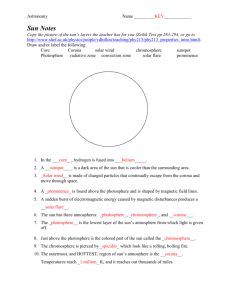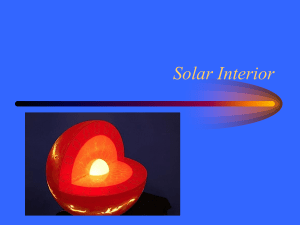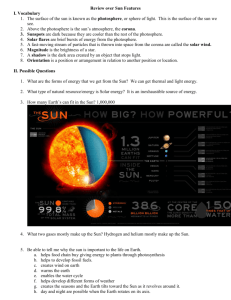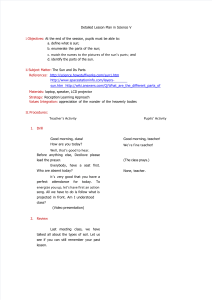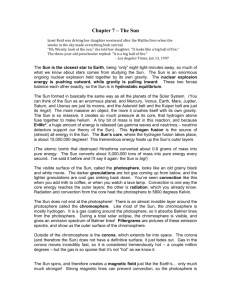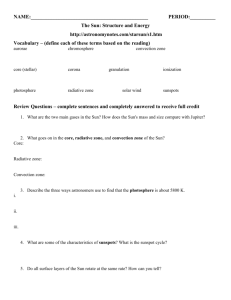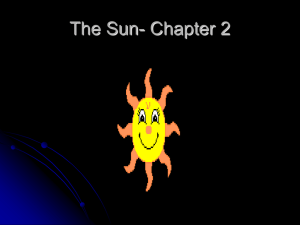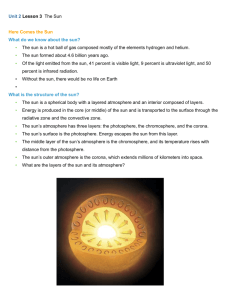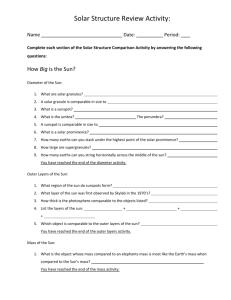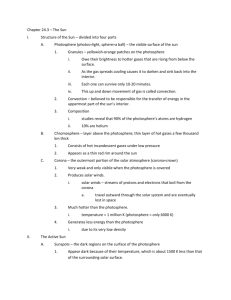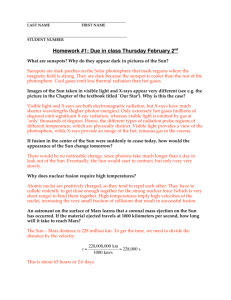Structure of the Sun
advertisement
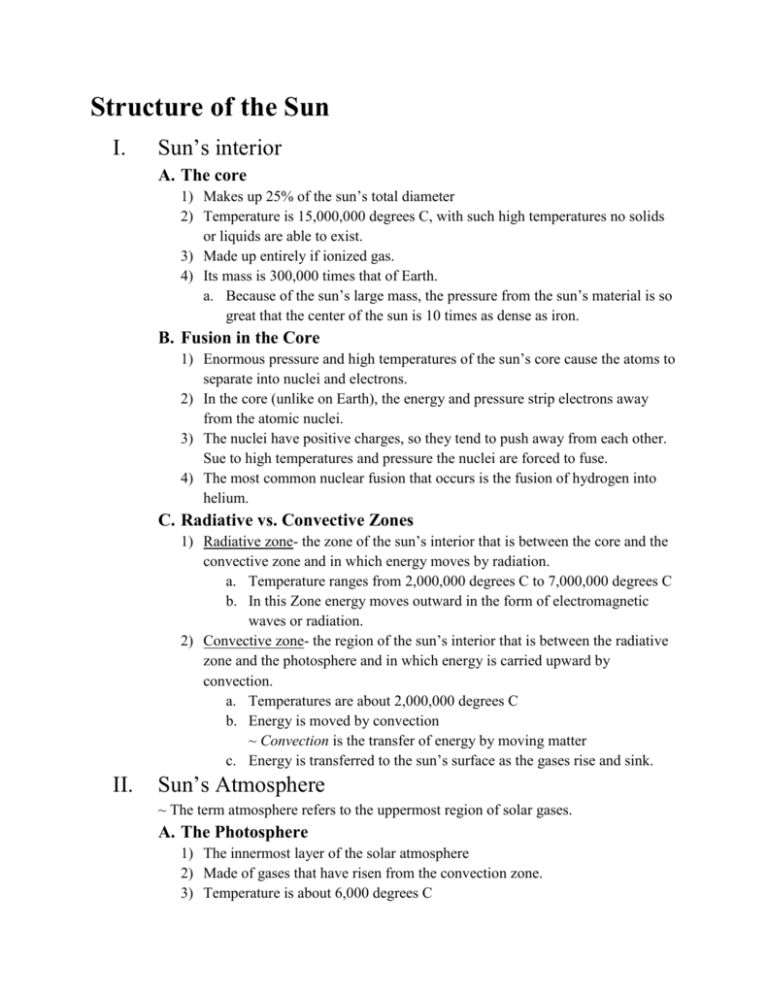
Structure of the Sun I. Sun’s interior A. The core 1) Makes up 25% of the sun’s total diameter 2) Temperature is 15,000,000 degrees C, with such high temperatures no solids or liquids are able to exist. 3) Made up entirely if ionized gas. 4) Its mass is 300,000 times that of Earth. a. Because of the sun’s large mass, the pressure from the sun’s material is so great that the center of the sun is 10 times as dense as iron. B. Fusion in the Core 1) Enormous pressure and high temperatures of the sun’s core cause the atoms to separate into nuclei and electrons. 2) In the core (unlike on Earth), the energy and pressure strip electrons away from the atomic nuclei. 3) The nuclei have positive charges, so they tend to push away from each other. Sue to high temperatures and pressure the nuclei are forced to fuse. 4) The most common nuclear fusion that occurs is the fusion of hydrogen into helium. C. Radiative vs. Convective Zones 1) Radiative zone- the zone of the sun’s interior that is between the core and the convective zone and in which energy moves by radiation. a. Temperature ranges from 2,000,000 degrees C to 7,000,000 degrees C b. In this Zone energy moves outward in the form of electromagnetic waves or radiation. 2) Convective zone- the region of the sun’s interior that is between the radiative zone and the photosphere and in which energy is carried upward by convection. a. Temperatures are about 2,000,000 degrees C b. Energy is moved by convection ~ Convection is the transfer of energy by moving matter c. Energy is transferred to the sun’s surface as the gases rise and sink. II. Sun’s Atmosphere ~ The term atmosphere refers to the uppermost region of solar gases. A. The Photosphere 1) The innermost layer of the solar atmosphere 2) Made of gases that have risen from the convection zone. 3) Temperature is about 6,000 degrees C 4) Much of there energy given from the photosphere is in the form of visible light. a. The layers above are transparent allowing the light from the photosphere to be seen from Earth. 5) Sun spots are found in this layer a. Sun spots are dark, cool areas of about 3,800 degrees C B. The Chromosphere 1) Thin layer of the sun that is just above the photosphere 2) During eclipses it glows a reddish color, this color is given off by the hydrogen 3) Temperatures range from 4,000 – 50,000 degrees C 4) In upward movements, gas regularly forms narrow jets of hot gas that shoot outward to form the chromospheres and then fade way within a few minutes. a. They can reach heights of 16,000 km C. The Corona 1) The outer most layer of the sun’s atmosphere 2) A huge region of gas with temperatures above 1,000,000 degrees C 3) Not very dense, but its magnetic field can stop most subatomic particles from escaping into space. a. But ions (electrons and electrically charged participles) do steam out into space as the corona expands, called Solar winds. b. Solar Winds – Flow outward as the corona expands to the rest of the solar system.
